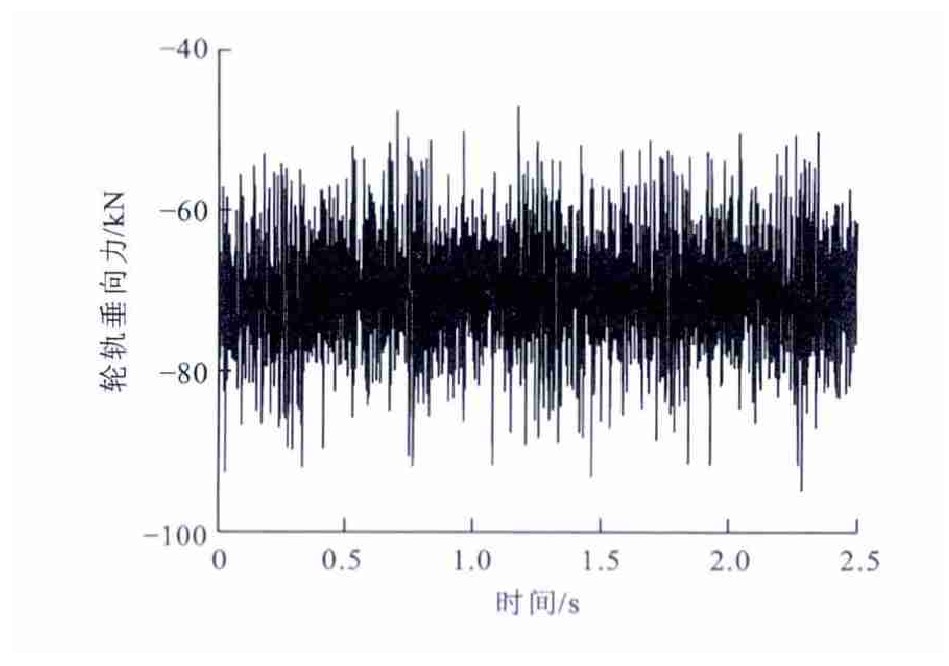Optimization design of acoustic radiation for S-form web plate wheel
Article Text (Baidu Translation)
-
摘要: 为了降低铁路列车车轮在运行中产生的振动噪声, 将结构动力优化原理应用于车轮结构截面优化设计中, 利用轮轨动力学有限元数值模拟和边界元声学模拟相结合的方法, 建立以车轮结构声辐射功率为目标函数的铁路列车低噪声车轮声辐射优化模型, 运用结构振动声辐射优化理论与多参数高效寻优的遗传算法进行求解, 实现低噪声车轮的声辐射优化设计。通过对优化车轮和标准车轮的振动声辐射对比分析发现, 优化车轮较标准车轮在辐板处的振动减小最明显, 最大振动加速度幅值由209.2 m·s-2减小为194.6 m·s-2, 优化车轮声辐射功率较标准车轮声辐射功率在大部分频段上均有所减小, 在1 200 Hz与3 200 Hz处降低比较明显, 分别达到2.31 dB和2.42 dB, 说明利用遗传算法对铁路列车车轮进行最优化设计是有效的、可行的, 给铁路列车减振降噪提供了一种途径。Abstract: In order to reduce the vibration noise produced by the wheels of running train, wheel structure dynamics optimization principle was applied to wheel structure section optimization design. By means of finite element numerical simulation method and boundary element acoustic simulation method, railway train low-noise wheel acoustic radiation optimizationmodel, which took wheel structure acoustic radiation power as objective function, was built. Using structure vibration acoustic radiation optimization theory and multi-parameter highly efficient optimization GA(genetic algorithm)method, the solution of model was programed successfully. Compared to standard wheel, optimized wheel plate vibration reduction is more obvious, for which the maximum vibration acceleration amplitude reduces from 209.2 m·s-2 to 194.6 m·s-2. According to wheel acoustic radiation power, optimized wheel acoustic radiation power decreases within most frequency ranges. The most obvious reductions are 2.31 dB and 2.42 dB at 1 200 Hz and 3 200 Hz, respectively. Analysis result indicates that it is available to optimize wheel by GA, and it provides a way for the vibration and noise reduction of vehicle.
-
表 1 目标函数计算结果
Table 1. Calculation result of objective function

-
[1] THOMPSON D J, JONES C J C. A review of the modeling of wheel/rail noise generation[J]. Journal of Sound and Vibration, 2000, 231 (3): 519-536. doi: 10.1006/jsvi.1999.2542 [2] THOMPSON D J, GAUTIER P E. Review of research into wheel/rail rolling noise reduction[J]. Proceedings of the Institution of Mechanical Engineers, Part F: Journal of Rail and Rapid Transit, 2006, 220 (3): 385-408. [3] 房建英, 肖新标, 金学松, 等. 行车速度对高速列车车轮振动声辐射特性的影响[J]. 机械工程学报, 2010, 46 (22): 96-104. https://www.cnki.com.cn/Article/CJFDTOTAL-JXXB201022020.htmFANG Jian-ying, XIAO Xin-biao, JIN Xue-song, et al. Effect of speed on acoustic radiation characteristics of high-speed train wheel vibration[J]. Journal of Mechanical Engineering, 2010, 46 (22): 96-104. (in Chinese). https://www.cnki.com.cn/Article/CJFDTOTAL-JXXB201022020.htm [4] 张蓉蓉, 刘达德, 朱宝山. 高速机车车辆低噪声车轮的探讨[J]. 噪声与振动控制, 1997 (4): 37-39, 33. https://www.cnki.com.cn/Article/CJFDTOTAL-ZSZK199706008.htmZHANG Rong-rong, LIU Da-de, ZHU Bao-shan. The study of low-noise wheel of high speed rolling stock[J]. Noise and Vibration Control, 1997 (4): 37-39, 33. (in Chinese). https://www.cnki.com.cn/Article/CJFDTOTAL-ZSZK199706008.htm [5] SHEVTSOV I Y, MARKINE V L, ESVELD C. Design of railway wheel profile taking into account rolling contact fatigue and wear[J]. Wear, 2008, 265 (9/10): 1273-1282. [6] SHEN G, AYASSE J B, CHOLLET H, et al. A unique design method for wheel profiles by considering the contact angle function[J]. Proceedings of the Institution of Mechanical Engineers, Part F: Journal of Rail and Rapid Transit, 2003, 217 (1): 25-30. doi: 10.1243/095440903762727320 [7] LEARY J F, HANDAL S N, RAJKUMAR B. Development of freight car wheel profile—a case study[J]. Wear, 1991, 144 (1/2): 353-362. [8] PERSSON I, IWNICKI S D. Optimisation of railway wheel profiles using a genetic algorithm[J]. Vehicle System Dynamics, 2004, 41 (S): 517-527. [9] 刘林芽, 刘海龙, 雷晓燕. 轮轨系统车轮的高频振动特性[J]. 交通运输工程学报, 2011, 11 (6): 44-49. http://transport.chd.edu.cn/article/id/201106007LIU Lin-ya, LIU Hai-long, LEI Xiao-yan. High-frequency vibration analysis of wheels with wheel-rail system[J]. Journal of Traffic and Transportation Engineering, 2011, 11 (6): 44-49. (in Chinese). http://transport.chd.edu.cn/article/id/201106007 [10] 郑循皓, 张继业, 张卫华. 高速列车转向架空气阻力的数值模拟[J]. 交通运输工程学报, 2011, 11 (4): 45-51. http://transport.chd.edu.cn/article/id/201102008ZHENG Xun-hao, ZHANG Ji-ye, ZHANG Wei-hua. Numerical simulation of aerodynamic drag for high-speed train bogie[J]. Journal of Traffic and Transportation Engineering, 2011, 11 (4): 45-51. (in Chinese). http://transport.chd.edu.cn/article/id/201102008 [11] TB/T 2561—1995, 中华人民共和国铁道行业标准[S].TB/T 2561—1995, railway occupation standard of the People's Republic of China[S]. (in Chinese). [12] MASSON P, BERRY A, NICOLAS J. Active structural acoustic control using strain sensing[J]. Journal of Acoustic Society of America, 1997, 102 (3): 1588-1599. doi: 10.1121/1.420071 [13] EFTHIMEROS G A, PHOTEINOS D I, DIAMANTIS Z G, et al. Vibration/noise optimization of a FEM railway wheel model[J]. Engineering Computations, 2002, 19 (8): 922-931. doi: 10.1108/02644400210450350 [14] 陈荣武, 刘莉, 郭进. 基于遗传算法的列车运行能耗优化算法[J]. 交通运输工程学报, 2012, 12 (1): 108-114. http://transport.chd.edu.cn/article/id/201201017CHEN Rong-wu, LIU Li, GUO Jin. Optimization algorithm of train operation energy consumption based on genetic algorithm[J]. Journal of Traffic and Transportation Engineering, 2012, 12 (1): 108-114. (in Chinese). http://transport.chd.edu.cn/article/id/201201017 [15] 柳拥军, 刘晓芳. 基于断面形状优化的地铁车轮减振降噪研究[J]. 计算力学学报, 2009, 26 (3): 369-373. https://www.cnki.com.cn/Article/CJFDTOTAL-JSJG200903015.htmLIU Yong-jun, LIU Xiao-fang. Optimization cross-sectional shape of subway wheel to decrease vibration and noise[J]. Journal of Computational Mechanics, 2009, 26 (3): 369-373. (in Chinese). https://www.cnki.com.cn/Article/CJFDTOTAL-JSJG200903015.htm [16] THOMPSON D J, HEMSWORTH B, VINCENT N. Experimental validation of the twins prediction program for rolling noise, part 1: description of the model and method[J]. Journal of Sound and Vibration, 1996, 193 (1): 123-135. doi: 10.1006/jsvi.1996.0252 -





 下载:
下载:














